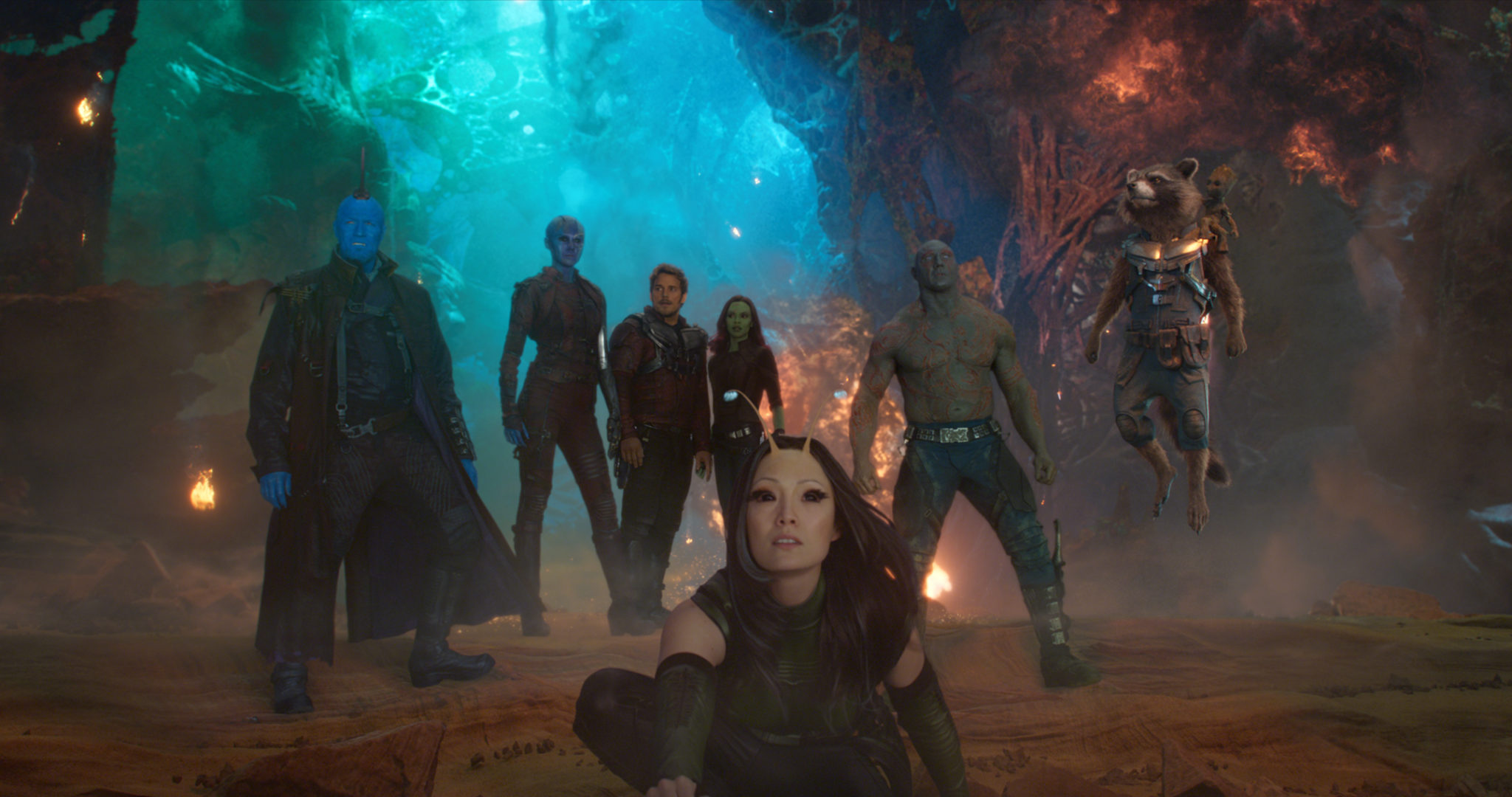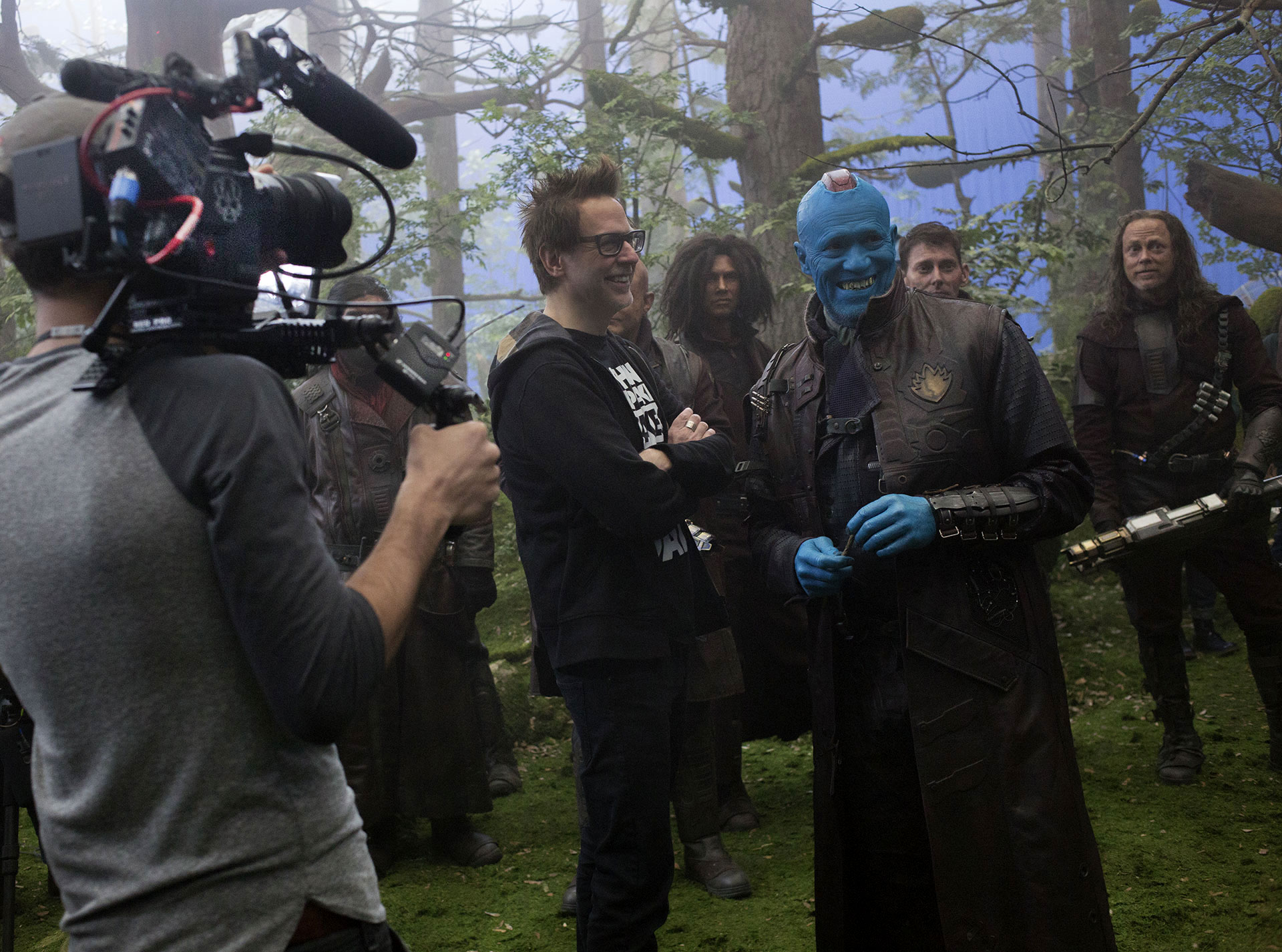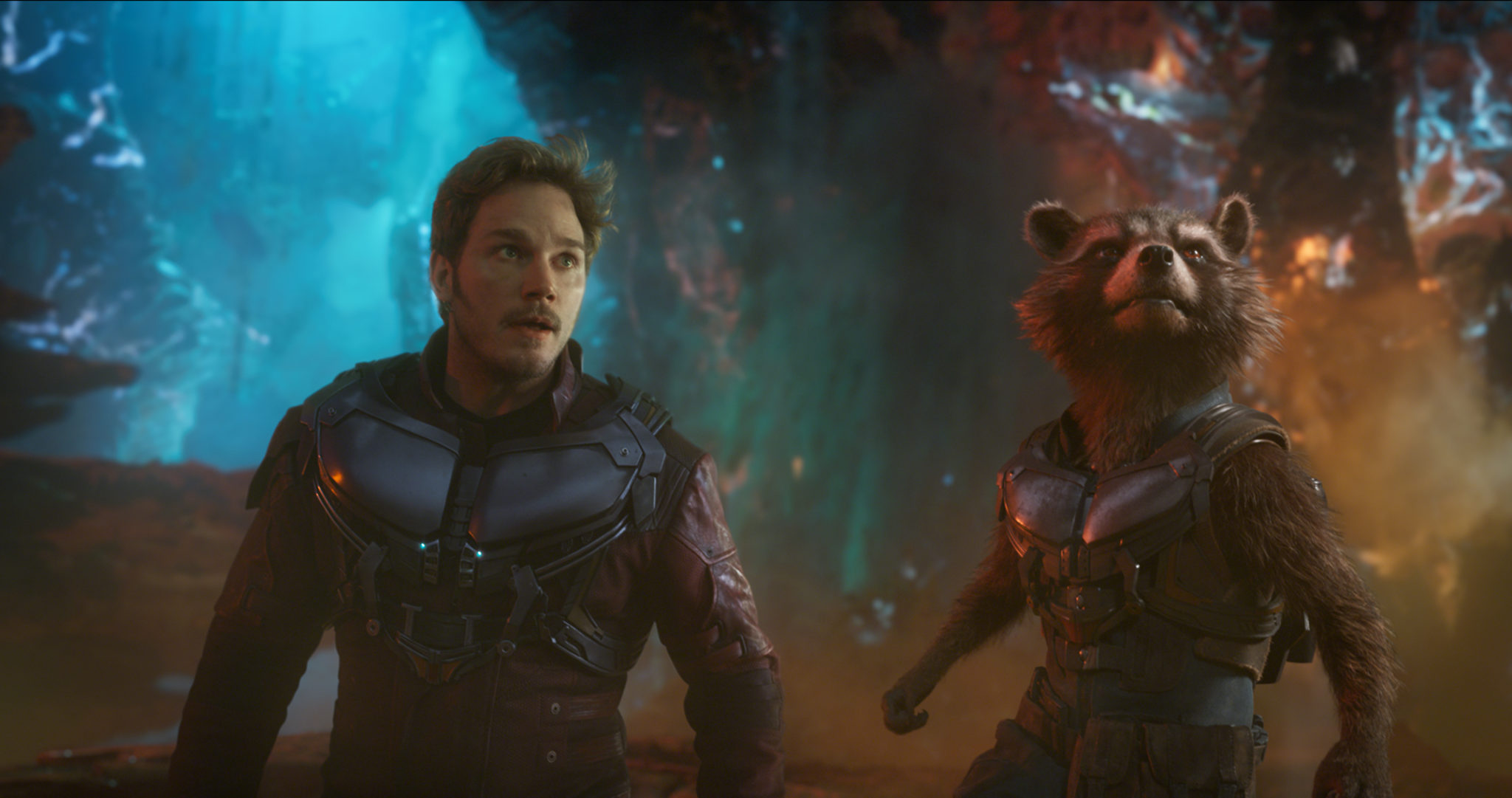How did Marvel Studios ensure that the amazing, eye-popping visuals created by Guardians of the Galaxy Vol. 2 director James Gunn, cinematographer Henry Braham, and VFX supervisor Christopher Townsend all ended up on screen as the filmmakers intended? Marvel Studios used ACES to manage the film’s color pipeline from dailies through to VFX, DI and archiving.
The first Guardians of the Galaxy was shot with ARRI Alexa XT cameras by cinematographer Ben Davis, BSC. However, since Braham had previously used Red Epics (along with an ACES workflow) on The Legend of Tarzan, he was eager to try out the new Red Weapon with the 8K Red Dragon VV sensor. In fact, he was the first cinematographer to use it worldwide. Both Braham and Gunn cite the large sensor size and small form factor as key elements that made the Red Weapon camera an ideal choice for this project.
Marvel Studios worked with Codex to create an efficient pipeline that would enable the use of the Red Weapon and ACES. Shed provided near-set services and worked alongside Codex and Red to integrate ACES along with the 8K Redcode Raw files. Although the production began shooting in February, 2016, workflow design began in December 2015. Early on, Codex implemented an early version of Red’s IPP2 image processing pipeline, which introduced a new debayering algorithm for the Red Weapon material.
On-Set Color Decisions
Braham doesn’t typically work with a DIT on-set. Instead, he prefers to work in a film-like manner with a small crew. Communicating his desired look to the production, post-production and visual-effects teams was an important part of the workflow design. He made on-set color decisions by adjusting the camera’s Kelvin and Tint parameters to achieve his look and show his creative intent. The universe depicted in Guardians of the Galaxy Vol. 2 has a very vibrant color palette — there was no white-balancing in the traditional sense and the color biases were often deliberately non-neutral.
For dailies and archiving, Shed relied on Codex Vault XL hardware, which includes GPU-accelerated decoding of Red R3D files. Once the files were backed up and available for dailies grading, Henry Braham’s Kelvin and Tint decisions were neutralized by Shed’s dailies technicians, who then applied ASC CDL grades to match his creative look. In simple terms, the neutralized raw image plus CDL equaled the on-set look. The files were graded within the ACEScc color space.
This neutralization has benefits for post-production. First, most debayer algorithms produce the best results when Kelvin and Tint are adjusted so that a grey card appears mostly neutral. Second, compositing tends to be easier and produce more realistic results when the plates are neutral and matched. Also, skin tones tend to be more natural-looking. The result is a “healthy negative” to grade in the DI process. Codex worked with Shed to implement a tool within Codex’s Vault software that let the operator select a “pivot” color (the most important color) in the source image and calculate new Kelvin and Tint camera settings, plus new CDL offsets to replicate the original look. The pivot color was always a 100% match to the on-set look, and all other colors were as close as possible, within the limitations of a CDL offset-only grade.
To ensure that all coverage of a particular scene would use the same or similar Kelvin and Tint values, the operator would select a reasonably neutral Kelvin and Tint (a grey card for example) within a master clip. These metadata values would then be copied and pasted to all relevant clips. Exposure compensation was adjusted as required for each clip to match the master clip and then the pivot color process described above was used to match Braham’s on-set look.
Like almost all movies shot these days, Guardians of the Galaxy Vol. 2 used more than one type of camera. As well as the Red Weapon 8K, Vision Research’s high speed Phantom 4K was used. For the Phantom, Codex implemented an IDT so that all the high-speed plates were delivered in the same linear ACES AP0 color space as the Red footage.
VFX Workflow
Visual effects were a huge component of Guardians of the Galaxy Vol. 2’s workflow. Marvel Studios used Codex Vaults to pull their own plates in house. VFX pulls were delivered as linear 16-bit floating point Open EXR files with ACES AP0 primaries. The simplified on-set color grading meant that the plates supplied to VFX facilities were “neutral,” and all the VFX vendors knew exactly what they were getting — ACES AP0 files. They also benefited from a defined workflow and standard, non-proprietary output transforms for viewing, meaning visual effects artists could have confidence that they were seeing the shots as they were meant to look, whether on a monitor or projected. The CDL metadata that communicated the intended look was embedded in the Open EXR file headers as well as the R3D metadata, enabling the artists to toggle the creative grade on and off as needed within Nuke during the compositing process. This grading metadata was also written to the master LTO archive tapes as XML sidecar files so that it can be recalled during any future remastering.
Digital Intermediate
The DI grading for Guardians of the Galaxy Vol. 2 was done by Steve Scott at Technicolor in Los Angeles. According to Annie Chang, VP of Technology at Marvel Studios, ACES again helped streamline the workflow, which also required an HDR grade. The AP0 files were used in the Autodesk Lustre color-grading system. For the Dolby Vision HDR finish, the SDR ODT was replaced with a non-proprietary ODT to optimize the image for the Dolby Vision projector, and then a different ODT was used for the home HDR version. This simplified the grading of these trim passes. ACES was also used in the creation of the titles, with both Sarofsky (the Chicago title house) and the Disney Title Graphics group creating AP0 files that were inserted seamlessly into the ACES workflow and DI.
The result was an ACES workflow that kept the film’s color pipeline on track, maintained standards and elevated confidence throughout the post-production process, and ensured that the color decisions that contribute to the film’s intended look are preserved on screen as the film makes its way from cinemas to living rooms — and that they will survive for the future.
Thanks to James Eggleton at Shed, Marc Dando at Codex and Annie Chang at Marvel for their help with this article.
Crafts: Post/Finishing
Sections: Technology
Topics: Project/Case study aces aces workflow Codex dragon Red weapon
Did you enjoy this article? Sign up to receive the StudioDaily Fix eletter containing the latest stories, including news, videos, interviews, reviews and more.















Leave a Reply